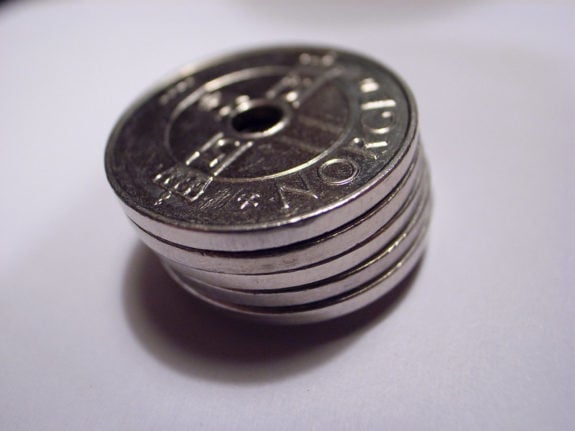But why shouldn’t they? In Norway, the wages of most employees are made public online and can be viewed by anyone. In that spirit, here are a few key pieces of information to add to the openness.
How Norway ranks to the rest of Europe in salaries
According to Eurostat, the hourly cost of labour in Norway is a substantial €50, considerably more than in neighbouring Sweden or Denmark – or any EU country for that matter.
Note that this figure does not separate wages from the overall labour cost – that data was not available in 2019, according to Eurostat.
What is the average wage in different sectors?
According to Statistics Norway, an average monthly wage for skilled agricultural and forestry, and fishery workers in 2019 was 35,170 kroner.
For academic professionals the average monthly income was 54,240 kroner.
Service and sales workers made an average of 35,150 kroner monthly and craft and trade related workers averaged 39,550 kroner.
The average monthly income in 2019 for construction workers was 44,570 kroner.
Transportation and warehouse workers made an average of 46,720 kroner a month and people working in the arts and entertainment industries made 41,210 kroner.
The national statistics agency has found that the average monthly salary for first-generation immigrants (without Norwegian heritage) is 44,180 kroner for full time workers.
Management positions
Managers in the financial sectors made a monthly average of 87,420 kroner last year, according to Statistics Norway.
Childcare service managers made 53,430 kroner and advertising and PR managers averaged 67,920 kroner.
The wages of politicians are somewhere in the middle of these samples of management wages, at 68,410. You can view more average salaries for a large range of management positions here.
The health professions
The average monthly income in 2019 for nurses in Norway is 46,810 kroner. Dentists made an average of 64,900 kroner.
Dieticians and nutritionists averaged 50,650 kroner.
For GPs, the average wage is 70,410 kroner, while for specialist doctors that rises to 85,180 kroner.
Is there a gender pay gap in Norway?
Unfortunately, yes. A 2017 Statistics Norway report shows the average monthly for women as 87 percent of that of men.
Occupations with the highest wage differentials in the men’s favour include financial managers and electrical mechanics.
The two most gender balanced occupations were doctors and legal professionals.
Data from 2019 shows the average monthly income for males as 50,080 kroner compared to 43,850 kroner for women, although the women’s average wage had increased by a higher percentage since the previous year.
While both women’s and men’s wages have increased since 2000, the annual increase for women is slightly higher than for men resulting in the pay gap decreasing by 3 percent since year 2000.
The average yearly income of different households
In 2018, the average yearly income (after tax) for a single individual younger than 45 years was 303,800 kroner.
Couples without children made a yearly average of 629,900 and couples with children (aged 0- 6 years) averaged 787,700 kroner.
Single parents with children (aged 0-17 years) averaged 421,200 kroner.
Protection of wages for foreign workers
There are a number of laws laws in place protecting foreign and seasonal workers, and their right to a fair wage and the same working conditions as Norwegian citizens. Many of these can be checked via the Norwegian Labour Inspection Authority (Arbeidstilsynet).
While there is no general average minimum wage in Norway, standards have been introduced to certain sectors including hospitality, cleaning and construction.
A foreign or seasonal worker is also entitled to the same working hours, breaks and overtime as their native colleagues.
What about self-employment?
In 2018, there were 321,509 self-employed people in Norway. The average annual gross income for a self-employed person was 680,300 kroner, translating to a personal income (wages, disability benefits and public pension) of 351,000 kroner.
If you run your own business, it is your responsibility to register your enterprise, pay tax, submit tax returns and receive tax assessment notice.
Did we leave out any professions you’d like to hear about? Any other topics on which you’d like us to delve into the data? Let us know — we’d be glad to hear your thoughts.
READ ALSO: How does income tax in Norway compare to the rest of the Nordics?



 Please whitelist us to continue reading.
Please whitelist us to continue reading.
Member comments